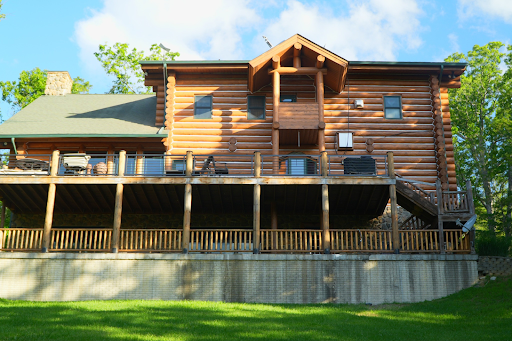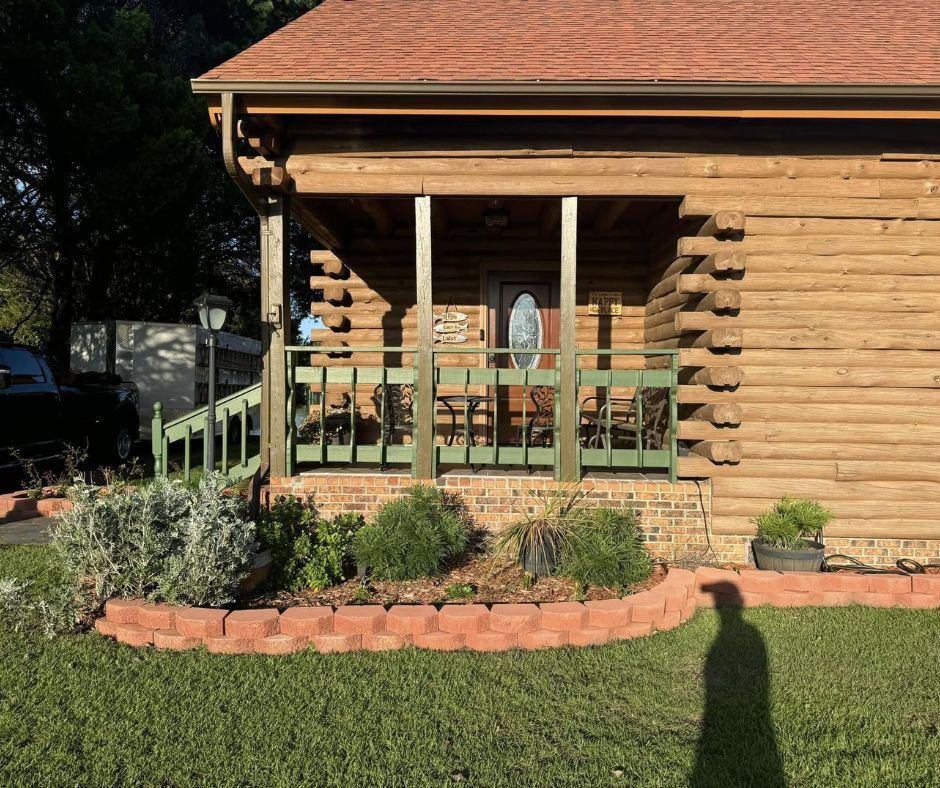Why Log House Restoration Is Essential for Long-Term Value and Beauty
- SEO Team
- Jul 22
- 5 min read
A log home is certainly something spectacular. It could be the charming, rustic feel. Maybe it's the way real wood looks in nature. Or maybe it’s how it feels like a peaceful retreat from the busy world.
But here’s the thing—log homes need a little TLC to stay that way. Just like we take care of our cars or go in for checkups, log homes need regular care too. That's where log house restoration comes in.
If you wish for your log home to stay in top condition and retain its value over time, restoration shouldn’t be ignored. It’s important to understand why log cabin caulking matters, what it involves and how a few steps can make a real change.

Log Homes Are Beautiful—But They Need the Right Care
Log homes are different from regular homes. The center of the framework is the logs. Because of this, their clothing gets sun, rain, snow, wind, and even insects on it. Over time, all of that can lead to:
Faded wood
Cracks between logs
Water damage
Mold or mildew
Insect problems
If you ignore those issues, they can get worse fast. But with the right care at the right time, you can fix small problems before they become big (and expensive).
So, What Is Log House Restoration?
Great question! Think of log house restoration as a “refresh and protect” process for your home. It’s not just one job—it’s a few important steps that bring your home back to life and keep it safe from damage.
Here’s what it usually includes:
Cleaning the logs to get rid of dirt, mildew, or old stains
Fixing or replacing damaged logs (like ones with rot or insect damage)
Sanding and staining to bring back the natural wood color and protect it from the weather
Log cabin caulking to seal gaps between logs and stop water, wind, and bugs from getting in
Applying protective treatments to prevent damage from the sun, moisture, and pests
Every log home is different, so the process depends on what your home needs. But the goal is always the same—make it look great and last longer.
Why Restoration Helps You in the Long Run
A number of people only deal with restoring their log home after a serious issue occurs. But it’s similar to letting your car run out of oil until it breaks down—you’ll end up spending more and worrying more.
Here’s why regular restoration is a smart move:
1. Keeps Your Home Strong
Water and bugs love weak spots in wood. Fixing small issues early helps keep your logs strong and your home safe.
2. Saves Money Over Time
Letting moisture or rot spread means bigger repairs later. Taking care of your logs now helps avoid big repair bills in the future.
3. Makes Your Home Look Amazing
They look as good today as they did when the game was new, unlike fading out. In either case, if you’re looking for buyers or care about upkeep, a nicely maintained log home always looks nice.
4. Helps You Stay Warm and Comfortable
During winter, cracks in the log wall allow the cold outside to come inside, and during summer, warm outside air can get inside. If you caulk your log cabin well, it will be cozier, and you’ll also save on your energy costs.
5. Protects Your Investment
Log homes are often passed down or kept in the family for years. Restoration helps make sure yours lasts for the next generation.
Let’s Talk About Log Cabin Caulking
An important aspect of restoring a home is applying caulk properly. Due to settling or shrinking, small spaces may appear between the wooden logs in your home. These differences might not look important when they start, but they can be.
Let water in
Create drafts
Invite bugs inside
Lead to wood rot or mold
Putting log cabin caulking into the gaps helps seal your home and prevent damage. On top of all the other benefits, it insulates your home, helping you feel more comfortable and spend less money on heating and cooling.
Because it’s both flexible and weather-tolerant, top-quality caulking will not crack and will keep protecting your logs for many years.
Signs It Might Be Time for Restoration
Not sure if your log home needs some attention. Here are a few signs to look for:
The wood looks faded, gray, or patchy
There are cracks or gaps between the logs
You see water stains, mold, or signs of bugs
Your energy bills are going up
More than five or six years have passed since you last worked on your car.
If you detect any of these signs, you should have a pro check your house. Taking a quick look at a house today can prevent problems and save you money later.
Why Work With BLP Log Home Restoration?

Let’s be honest—many people aren’t keen on fixing up a log home by themselves. You need the proper tools, products, and experience.
That’s where BLP Log Home Restoration comes in.
We’re experts in restoring log homes the right way. If all you need is a coat of new stain and log cabin caulking, or if your home requires more extensive repair, we’re the team for you. Every home is treated with care, kindness, and a good eye for all the details.
Homeowners across the country have trusted us to maintain and restore their log homes, and we hope you do too.
1. How often should I restore or reseal my log home?
The time frame for resealing or restoring most log homes is between 5 and 7 years, depending on the local weather and how much your house is exposed to direct sunlight, precipitation, and snow. If you notice your paint is starting to fade, you see cracks, or there are water stains, you may need to attend to your home earlier.
2. What’s the difference between log cabin caulking and chinking?
They both seal the spaces between logs, but they’re put on in different ways. The flexible caulk is used for small gaps, while the thicker type, chinking, is reserved for wider openings (frequently in log buildings). By looking at your home, we will guide you toward a furnace that fits your needs.
3. Can restoration fix water or insect damage in my logs?
Often, things change in favor of people with low incomes. When we restore a cabin, we assess the whole structure and replace or repair logs that show damage. In addition, we offer treatments that stop future moisture or pest issues, helping you avoid the same problems.
4. Is it okay to live in the home while restoration work is being done?
In most cases, yes. Many restoration tasks—Washing, caulking and staining can all be done safely even while the home is being lived in. The process will follow your timeline to make it as simple and uninterrupted as we can. For larger repairs, we’ll talk through the options with you before we get started.
Keep Your Log Home Beautiful for Years to Come
A log home means more than just building a house. So much of what we remember truly happened here. A nice hideaway. The story of our family. Just as you’d look after anything unique, your aquarium should have the best care.
Working on your home’s restoration and maintenance ensures it looks nice for a long time, still feels cozy and won’t depreciate.
We offer assistance for your Bluestone Log Home needs. No matter if you need a full restoration or just want some starting advice, our team can help. We’ll review the various alternatives for you and help ensure your log home stays in great condition.
Ready to give your log home the care it deserves?
Get in touch with BLP Log Home Restoration, and together, we can restore your home.





Comments